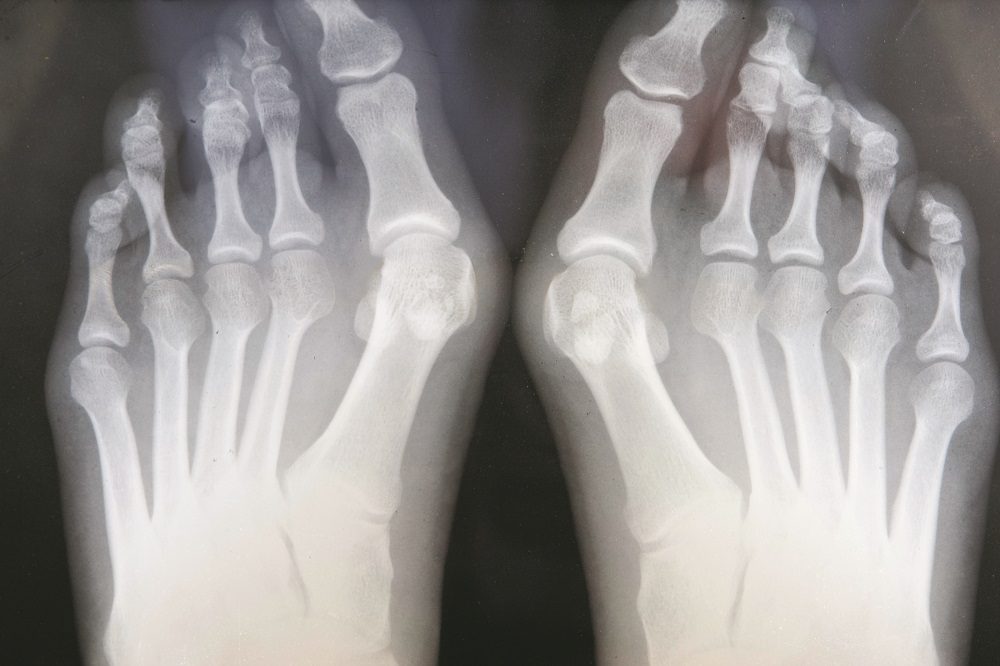Until recently, surgery to remove a bunion—that unsightly, bony bump on the joint at the base of the big toe—was painful, invasive and required a very lengthy recovery. But recent advances in bunion surgery have changed all that. Bottom Line Personal asked Georgeanne Botek, DPM, podiatric surgeon at Cleveland Clinic, about the new options for bunion removal…
First—Is Surgery Necessary?
Not every bunion—or hallux valgus, as it’s called medically—should be corrected, and surgery should not be done for cosmetic reasons alone. If a bunion doesn’t cause you pain or interfere with your daily life, then work with a skilled podiatrist to prevent it from getting worse by wearing proper shoes and foot inserts, doing certain exercises and making other lifestyle changes.
If a bunion causes your foot to consistently or chronically ache and throb even when you’re at rest, surgery likely is warranted. Other reasons to have surgery: When the deformity starts to affect the position of your second toe…or you are experiencing changes to the way you walk, your gait and/or your balance.
Today’s Bunion Surgery
A bunion forms when the joint at the base of the big toe moves out of place and causes changes in the adjacent smaller toes such as creating a hammertoe. The aim of bunion surgery—bunionectomy—is to realign the joint (and possibly the tendons and ligaments) and put the bones back in place. The traditional or open surgery involves making an incision on the top or inside medial border of your great toe, shaving down the bone and cutting the metatarsal bone. Recovery usually takes at least six to eight weeks.
There are more than 150 surgical techniques for bunion surgery—Chevron, McBride, Lapidus, Juvara, open wedge, etc. Surgeons often are trained in multiple systems because not every approach is right for every patient. The best bunion-removal surgery technique for you depends on several factors, including how much deformity your bunion has caused and your overall health.
New approaches for bunion removal require smaller incisions and less time in surgery, depending on the severity of the bunion. Recovery also is easier—with a smaller scar and a compressive screw, the patient typically can walk on the foot in a boot anywhere from one to three weeks after surgery and possibly start wearing shoes in six to eight weeks. Being immobile for a shorter period means less chance of stiffness as you recover. Bonus: Today’s longer-acting local anesthetics and regional nerve blocks can manage pain for up to 48 to 72 hours after surgery…and judicious use of recommended over-the-counter medications means that many patients no longer need narcotics after the block wears off.
The newest approach to correcting a bunion is lapiplasty, in which the surgeon uses 3D imaging to reposition the joint and toe bones back in place before securing the joint with a titanium plate. Cuts to the joint help correct the misalignment. This surgery may require a larger or multiple incisions. The outpatient procedure itself may take up to two-and-a-half hours, depending on the surgeon. After a few days in a bandage, you’ll switch to a surgical walking boot. You may be able to bear weight on the foot within one week…be back at work within two to three weeks…and be able to wear shoes in six to eight weeks. Lapiplasty is as effective as the open procedure for mild-to-moderate-size bunions…provides cosmetically pleasing results…and has a recurrence rate of less than 30%.
Recovery and Risks
Whatever procedure you have, you won’t be able to go on your treadmill or walk your dog immediately after, but your surgeon may encourage low-impact exercise videos, riding a stationary bike, and doing resistance and flexibility work that won’t affect the surgical site.
One thing that hasn’t changed: Bone healing still takes time. Full recovery is a year-long process as your foot bones remodel and your body adjusts to the foot being back in its normal position. Follow-up instructions will include not going barefoot or wearing high heels and adding appropriate arch support to shoes if you have flat feet.
Risks: Swelling, stiffness, infection, numbness and slower-than-expected healing. Bunion surgery is safe for patients of most any age, but it can be more complex when there is bone thinning from osteoporosis or osteopenia.
For the best outcome: Optimize your health before the surgery—the recovery period will only aggravate any existing health issues because you will be less mobile than usual. Examples: If you have diabetes, get your blood sugar under control…lose weight if you need to…make sure your levels of vitamin D are in the normal range…if you have any other foot problems, such as swelling, address them with your doctor before you have any bunion procedure.
Find the Right Doctor
Like most medical procedures, the key to successful bunion surgery is the surgeon’s expertise. There is a steep learning curve, and any surgeon you choose should have done at least 50 procedures on real patients.
Before deciding on a surgeon and a specific bunionectomy technique, talk to multiple doctors. Word of mouth also can be helpful—ask other people who have had a bunion operation for their opinions about the surgery and the surgeon.
At each consultation, ask the healthcare provider for a realistic assessment of what to expect, including what your foot will look like and, if any bone will be removed, whether your big toe will be shorter than before and by how much.


